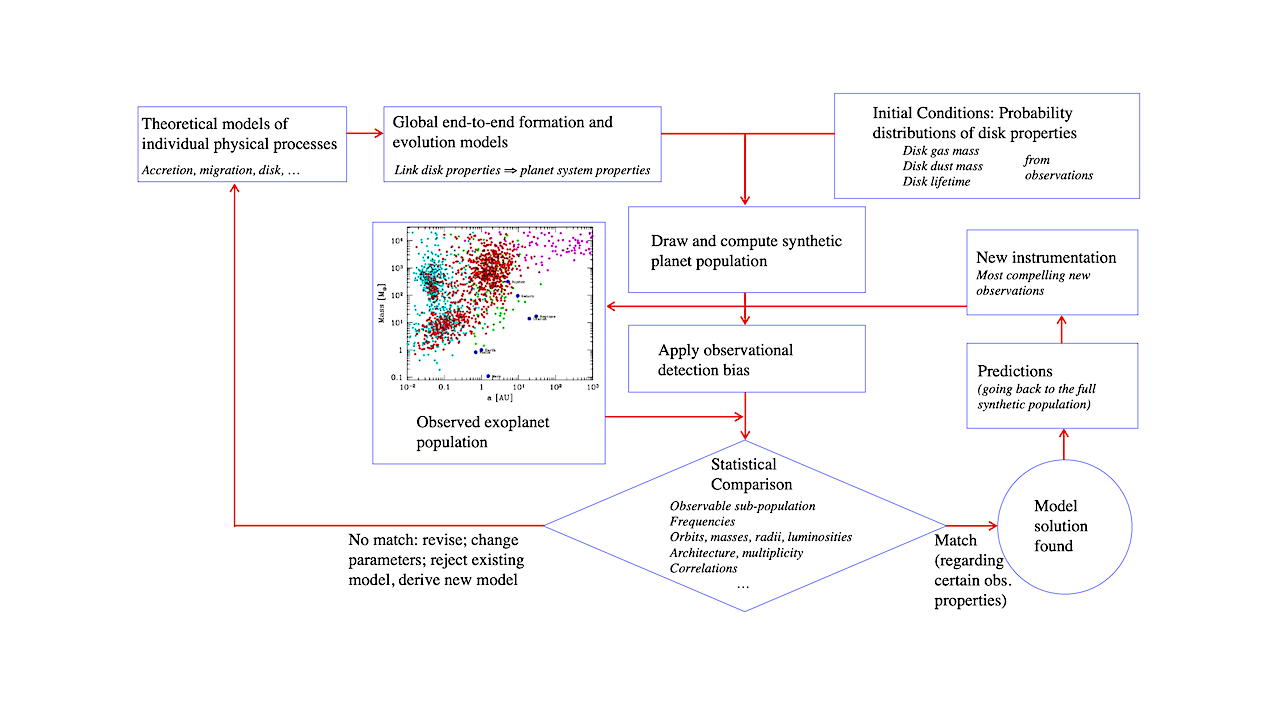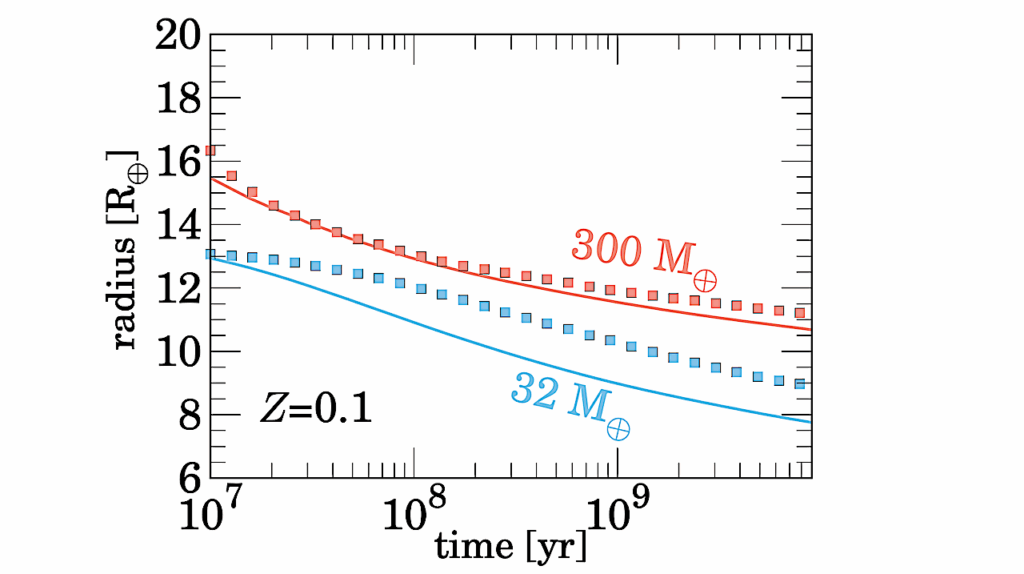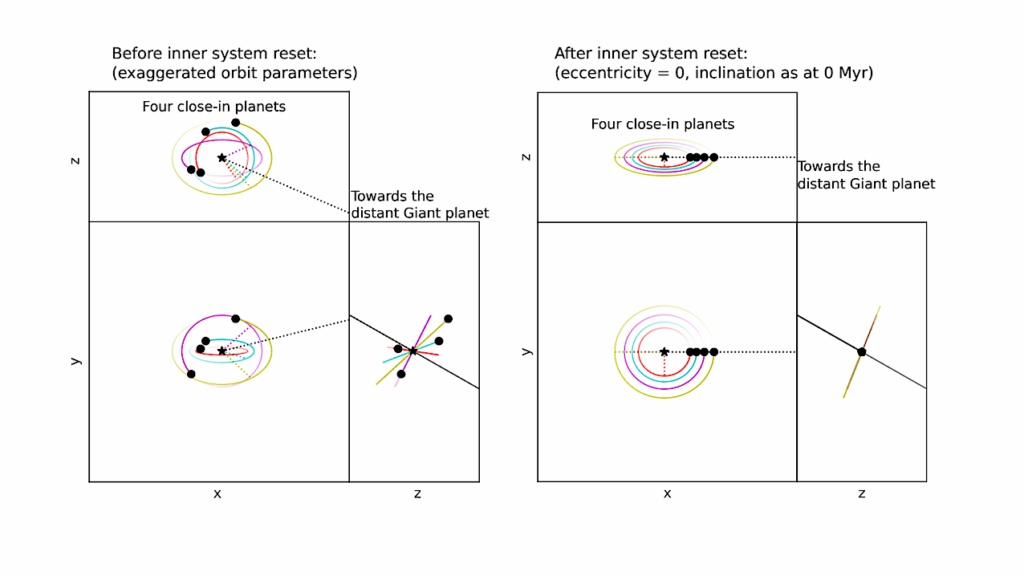Planetary Population Synthesis

The planetary population synthesis method aims at comprehensively testing planet formation theories against observational evidence and providing theoretical sets of planets to help interpret observations and inform instrument development.
Recent developments on the theoretical and observational sides are reviewed: First, observational constraints are summarized, then, the work flow of population synthesis and its two main components are presented, which are, global end-to-end models of planetary formation and evolution and probability distributions for the disk initial conditions.
Next, the output of four recent population synthesis models is compared in detail and differences and similarities are discussed. The goal is to help the reader understand the assumptions that were made and how they impact the results. Furthermore, future directions of research are identified and the impact of current and future observational programs is discussed.
With JWST, evidence on disk and planet compositions emerges. Planet formation models need to prepare for these near-future developments by including self-consistent magnetic wind-driven gas and dust disk evolution, planetary migration, as well as employ hybrid pebble and planetesimal accretion, which are identified as dominant modes of accretion in different mass regimes.
Remo Burn, Christoph Mordasini
Comments: To be published in: Handbook of Exoplanets, 2nd Edition, Hans Deeg and Juan Antonio Belmonte (Eds. in Chief), Springer International Publishing AG, part of Springer Nature. 59 pages, 8 figures. This is an update of arXiv:1804.01532
Subjects: Earth and Planetary Astrophysics (astro-ph.EP)
Cite as: arXiv:2410.00093 [astro-ph.EP] (or arXiv:2410.00093v1 [astro-ph.EP] for this version)
https://doi.org/10.48550/arXiv.2410.00093
Focus to learn more
Submission history
From: Remo Burn
[v1] Mon, 30 Sep 2024 18:00:00 UTC (4,704 KB)
https://arxiv.org/abs/2410.00093
Astrobiology,








